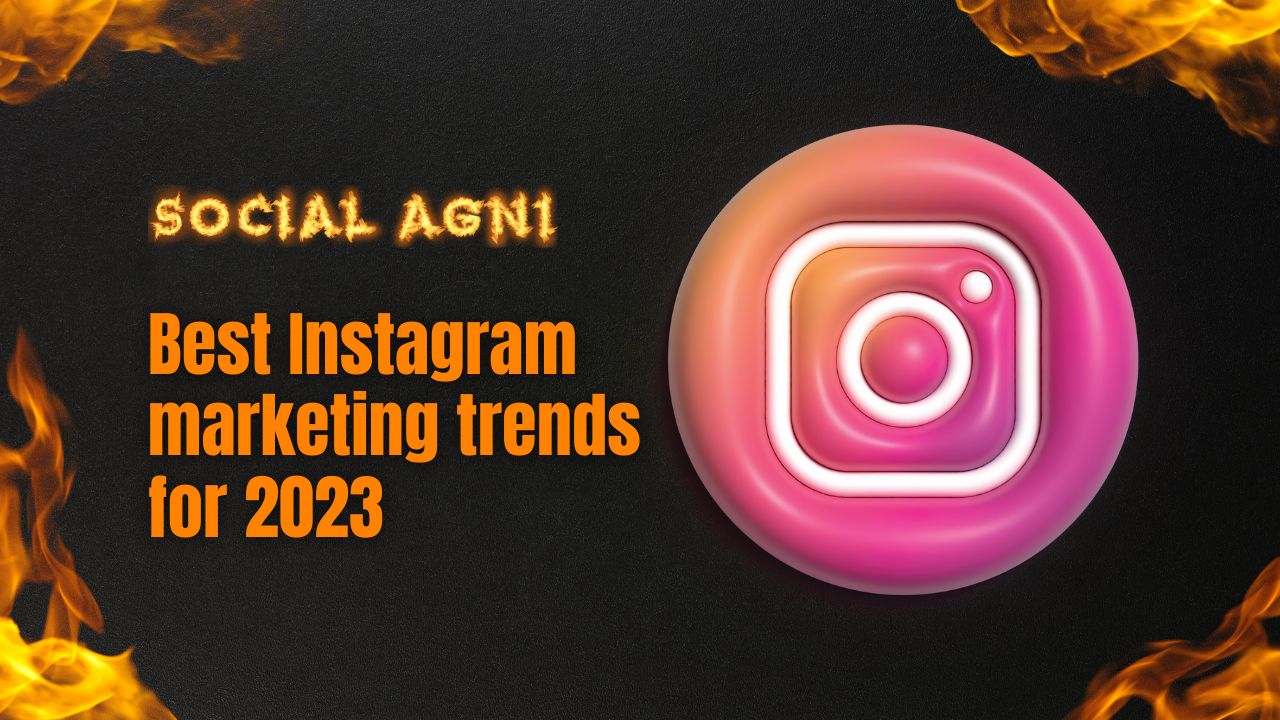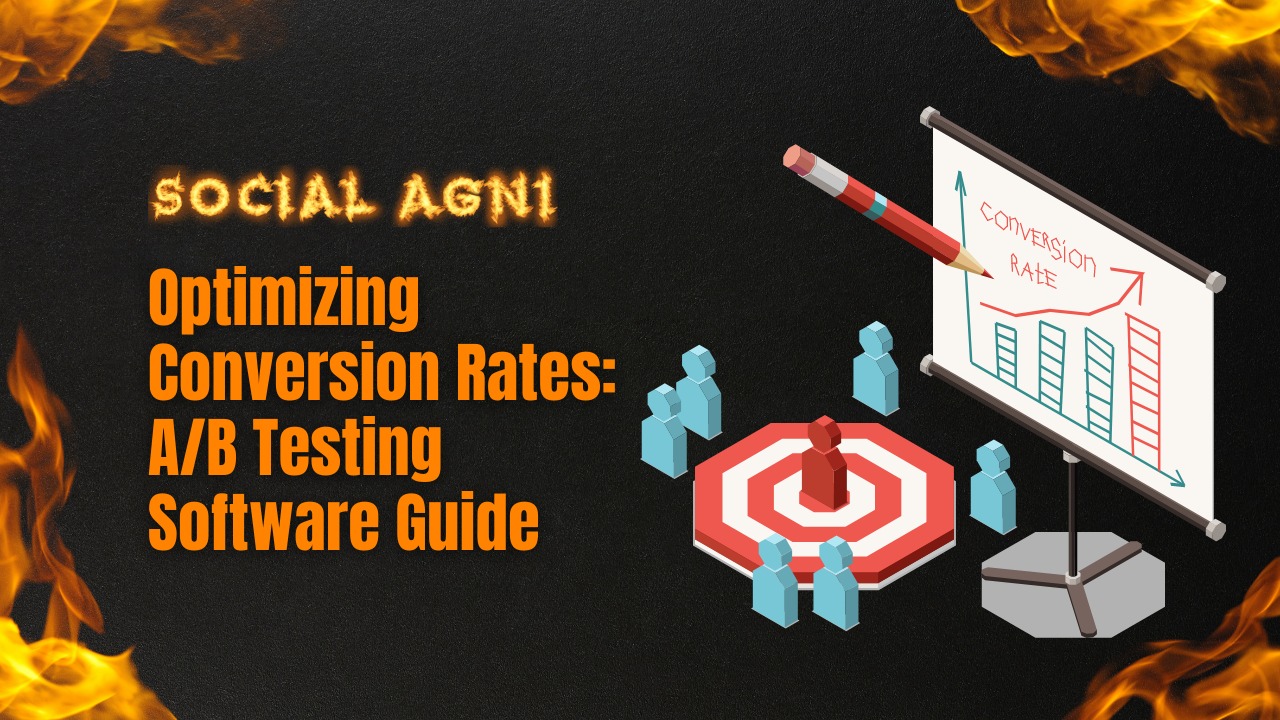Social media has changed how organizations market and engage with customers in the digital age. Instagram is a leading platform for marketers to display their products and establish a devoted following. In 2023, marketers must keep up with Instagram marketing trends to navigate the ever-changing social media ecosystem and boost their brand’s online visibility. Over a billion people use Instagram monthly. Businesses may reach and engage with their target audience through this enormous user base. As the platform evolves, so do the marketing methods needed to stand out and attract consumers. 2023 Instagram marketing trends include Influencer Marketing 2.0. In recent years, influencer collaborations have focused on nano and micro-influencers with smaller but highly engaged followings. These influencers frequently have greater sincerity and trustworthiness, resulting in deeper audience relationships. To develop brand confidence and consistency, brands are seeking long-term collaborations with influencers. Shoppable posts and social commerce are also growing. Product tags and in-app purchases let Instagram users shop within the app. Brands may now increase sales and conversions by integrating social media with e-commerce. Instagram also favors video content. IGTV and Instagram Reels allow marketers to produce captivating video content. Live video streaming is another popular technique to communicate with followers. User-generated content (UGC) videos, where customers produce brand-related material, are also rising, adding authenticity and engagement. Instagram Stories’ polls, quizzes, and challenges are growing in popularity. Interactive components help companies engage, learn, and engage. Augmented Reality (AR) filters allow marketers to provide their audience with exciting and engaging experiences. 2023 is about social listening and customization. Businesses may learn about client moods and preferences by monitoring Instagram brand mentions. Based on this information, marketers may customize and personalize experiences to engage with their audience and give relevant content. Instagram UGC campaigns remain popular. Encourage people to develop brand-related content to establish trust. Hashtag campaigns and contests boost UGC and user involvement. Sharing UGC across platforms increases brand reach and engagement. Marketing success depends on Instagram analytics and performance tracking. Instagram Insights and AI-powered analytics tools give reach, engagement, and demographic data. Marketers may optimize their strategy by evaluating these indicators. Trend 1: Influencer Marketing 2.0 Brands use influencer partnerships on Instagram to reach their target demographic. Influencer marketing 2.0 is emerging in 2023. Nano/Micro-Influencers: Nano and micro-influencers are replacing macro- and celebrity influencers. These people have niche audiences with great engagement. Nano and micro-influencers let marketers reach highly focused audiences for more meaningful interactions and conversions. These influencers tend to build trust and sincerity with their audience. Authenticity and Transparency: Influencer Marketing 2.0 emphasizes authenticity and openness. Some influencers were criticized for pushing companies without declaring sponsorship ties. As customers become more discriminating, marketers are preferring influencers who are upfront about their ties. Influencers who authentically support a brand’s ideals and goods are more likely to connect with their audience. Influencers that offer honest evaluations and experiences build trust and credibility with followers, therefore brands are working with them. Long-Term Partnerships: Long-term collaborations are another Influencer Marketing 2.0 change. Brands are valuing long-term connections with influencers over one-off collaborations. Long-term agreements allow influencers to truly grasp the brand’s values and products. This consistency builds brand awareness and trusts over time. Long-term agreements also help influencers connect with the company, resulting in more honest and effective content. Nano and micro-influencers, sincerity, openness, and long-term collaborations define Influencer Marketing 2.0. These trends can help firms use influencer marketing to connect with their target audience and boost Instagram engagement and conversions. Trend 2: Shoppable Posts and Social Commerce In 2023, Instagram’s shoppable posts and social commerce will reach new heights. These capabilities are helping brands shorten the buying experience and boost Instagram conversions. Instagram Shopping Features: Product tags and the shopping tab have made Instagram a virtual showroom. Brands can tag items in articles and stories to provide extensive information and direct links to purchase. Brands may engage users by effortlessly incorporating product information into visual content. In-App Purchases and Checkout: Instagram added in-app purchases and checks out to improve commerce. Users may now finish transactions without being diverted to external websites. Users may touch a button to complete transactions using stored payment information, making shopping easy. This simplified buying procedure enhances conversions. Influencer-Driven Sales: Instagram influencers also drive sales. Influencers’ followers trust their advice. Brands may use influencers and shoppable posts to directly market to their engaged audience. Influencers may boost brand visibility, trust, and sales. Shoppable posts and social commerce boost companies. It showcases its items in an interesting and aesthetically appealing way while streamlining the buying process. Brands can use these trends to streamline purchasing, boost conversions, and make money on Instagram. Finally, Instagram marketing in 2023 includes shoppable posts and social commerce. Instagram’s retail tools, in-app purchases, and influencer-driven sales let businesses reach Instagram’s large user base and turn engaged users into consumers. Businesses may increase sales and use Instagram as an e-commerce platform by adopting this trend. Trend 3: Video Content Dominance Video content dominates Instagram in 2023, giving marketers a compelling opportunity to engage with their audience. IGTV, Instagram Reels, and live streaming have made video content important for Instagram marketing efforts. IGTV and Instagram Reels: Instagram’s long-form video platform and short-form video feature have gained popularity. These video formats let marketers express tales visually and attract attention. IGTV lets marketers post longer, more in-depth films, while Reels lets them post short, fun movies. Brands may use both formats to create diverse video content for different audiences. IGTV and Instagram Reels: Live video streaming helps marketers communicate with their audience in real-time. Live streaming makes Q&As, product premieres, behind-the-scenes glimpses, and interactive events real and dynamic. Brands may interact with followers, answer questions, and get fast feedback. Live video’s immediacy and a personal touch may build brand loyalty and audience relationships. User-Generated Content (UGC) Videos: UGC videos are popular and valuable for marketers. Users share brand-related UGC videos. Contests, challenges, and sponsored hashtags can inspire UGC videos. These films demonstrate authenticity and develop viewer
Businesses strive to increase their online presence and conversion rates in today’s competitive digital market. A/B testing, a strong tool for comparing two versions of a website or app to see which performs better, is one of the best ways to achieve this aim. Businesses use software for A/B testing. A/B testing software helps firms develop, implement, and analyze A/B tests easily. It simplifies testing to find areas for improvement, maximize conversion rates, and improve website performance. A/B testing software aids data-driven decision-making. Businesses may learn what customers want by running controlled tests and evaluating user behavior and conversion rates. Data-driven decision-making improves user experiences, engagement, and conversion rates. A/B testing software is flexible. Landing pages, call-to-action buttons, navigation menus, content positioning, and design elements can be used. Businesses may maximize conversion rates and achieve their goals by fine-tuning every aspect of their online presence. A/B testing software simplifies testing with several capabilities. These include user-friendly interfaces, drag-and-drop flexibility, comprehensive statistical analysis, real-time reporting, and connection with other marketing tools and platforms. Such capabilities allow firms to easily run A/B testing, track performance, and receive actionable information without technical experience. This thorough overview covers A/B testing tools. We’ll examine its features, the numerous types of software, and how to choose the ideal one for your organization. We will also discuss how to build up experiments, execute tests, assess outcomes, and make data-driven decisions. This post will teach you how to use A/B testing tools to boost conversion rates and business growth. Understanding A/B Testing Software A/B Testing Software A/B testing software, often known as split testing software, lets organizations compare two or more versions of a website, mobile app, or other digital assets in controlled studies. It lets companies evaluate items’ effects on user behavior and conversion rates. The program collects clicks, conversions, and engagement metrics by randomly splitting website or app traffic between versions. A/B testing software’s main features Test Creation A/B testing software lets you design and specify web page or app element variants. Test hypotheses by changing design, content, layout, or call-to-action components. Traffic Allocation The program equally distributes website or app users across the versions being evaluated. Randomization eliminates prejudice and ensures accuracy. Data Collection A/B testing software monitors clicks, conversions, bounce rates, session lengths, and other information. It details variance performance. Statistical Analysis The program analyzes data for significance and reliability. It shows firms whose changes boost conversion rates statistically. Reporting A/B testing software produces detailed experiment reports and visuals. These reports aid firms in data analysis and decision-making. Integration Many A/B testing software integrate with marketing and analytics systems. A/B testing data may be combined with other indicators for a comprehensive view of marketing activities. Types of A/B Testing Software A/B testing software comes in several types. A/B testing software is either cloud-based or self-hosted. Cloud-Based A/B Testing Software Users access cloud-based software via a web browser. It’s simple, scalable, and updated frequently. Cloud-based solutions offer a simple interface, easy test development, and strong reporting. They work for all firms, especially those with little technological resources. Self-Hosted A/B Testing Software Self-hosted A/B testing software is installed and hosted on the company’s servers. For enterprises with security or compliance needs, it offers more control and customization. Installing, maintaining, and customizing self-hosted systems requires technical skills. They’re more flexible yet cost more and require IT maintenance. Businesses should evaluate technological capabilities, money, scalability, and data protection when choosing an A/B testing program. The business’s demands and resources must choose the software type. Choosing the Right A/B Testing Software A. Identifying Your Requirements Before starting the selection process, you must determine your A/B testing needs and goals. Consider these elements Testing Objectives Set A/B testing goals. Do you prioritize conversion rates, user engagement, or website or app optimization? Budget Consider A/B testing software costs. Monthly subscriptions or enterprise-level fees vary by solution. Check your budget for features and support. Technical Expertise Assess your team’s technical knowledge. A/B testing software can be user-friendly or need coding or programming abilities. Select a solution that fits your team. Scalability Consider software scalability. Make sure your A/B testing software can manage large traffic without affecting performance. Integration Make sure the program works with your marketing tools. Integration simplifies testing and allows data exchange between systems. B. Key Considerations in Selecting A/B Testing Software Consider these aspects while choosing A/B testing software for your business User Interface and Ease of Use Choose intuitive software. A drag-and-drop editor, visual editing, and pre-built templates facilitate test creation. Make sure the program is intuitive and easy to use. Integration with Marketing Tools If you utilize analytics platforms, CRM systems, or CMS systems, make sure the A/B testing software interfaces easily with them. Integration enhances data analysis and procedures. Statistical Analysis and Reporting Capabilities A/B testing software should offer comprehensive statistical analysis and reporting. Find confidence intervals, p-values, and statistical significance markers. The program should also provide clear and attractive test reports. Real-time reporting aids testing and decision-making. Pricing and Scalability Compare software pricing to your budget. Check the cost against your expected testing volume and scalability demands. Some software has tiered pricing based on visits or testing. Check the price model for your business size and development objectives. Customer Support and Training Check the software vendor’s customer support and training. Look for software manuals, tutorials, and training materials. In case of troubles or queries during implementation, check customer service channels including email, live chat, and phone assistance. Consider these parameters to find an A/B testing software that meets your company’s needs, technical ability, and budget. Implementing A/B Testing Software A. Setting up A/B Testing Experiments Test Hypothesis and Goals First, state your hypothesis and goals. Choose an element or variant to test and build a hypothesis about its influence on conversion rates or user behavior. Determine Test Variables Choose the web page or app variables you wish to test. Headlines, call-to-action buttons, layouts, graphics, and other elements can impact user behavior. For reliable results,

